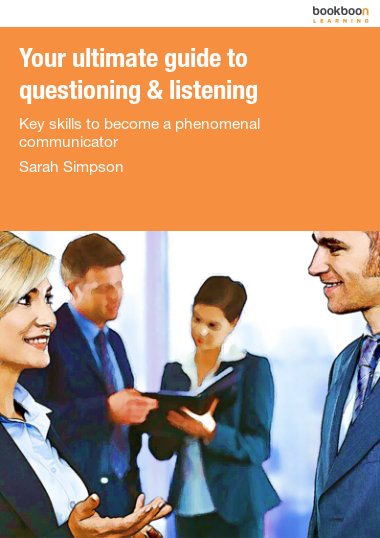Hi and welcome to this book on questioning. I have spent over 20 years teaching and writing books on a variety of; presentation, management, leadership and team building topics. I have also managed staff in both the public and private sector and as such have perfected my communication skills. In particular how to ask questions, respond to what is and isn’t said and understand body language and verbal cues. It is this experience that I will be sharing with you.
It sounds easy right? you ask a question and it gets answered with useful information you can use…oh, if only it were that easy!
The skill in being a great communicator and questioner is in asking; the right type of question to the right person, at the right time, in the right environment. But, even this is not enough.
I often ask my students do they listen? and of course, usually without exception they say “yes”. But, I have tested this in a variety of ways to a huge range of people from a whole host of organisations and seniorities and without exception I can conclude that active listening in a universally underdeveloped skill.
The thing is, in order to become a phenomenal questioner you must also be a phenomenal active listener. You also need to be able to read what is being said non-verbally i.e. through a persons body language. We will look at some of the common body language cues and signs during section 6.
So, what will this book cover?
- What is questioning?
- What can questions do?
- Why do we ask them?
- Active listening
- Body language
- 12 different types of questions – that you can ask or indeed be asked
- Responses to questions
In order to get the most out of this book I have added some supplementary information, which will support the main topics and further advance your knowledge.
I really hope you enjoy the course and please do not hesitate to contact me with any questions you may have.

